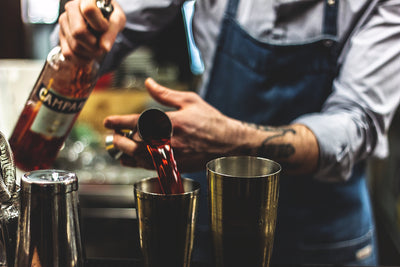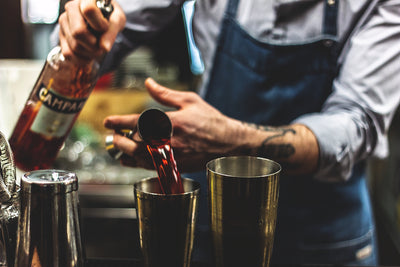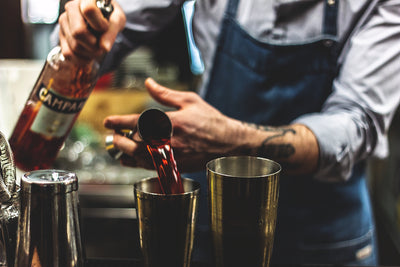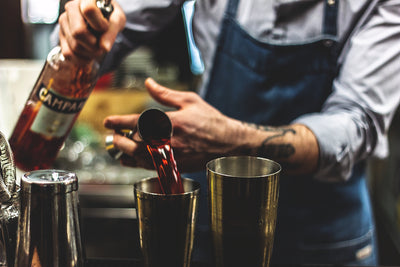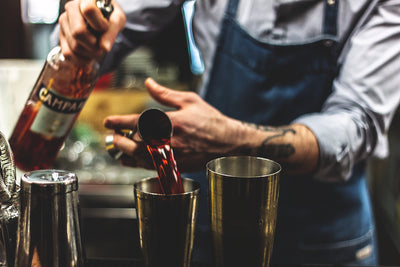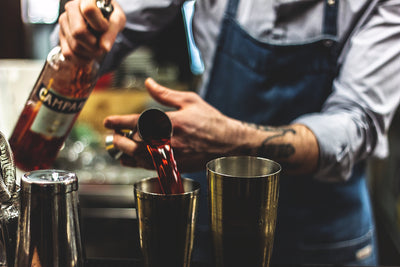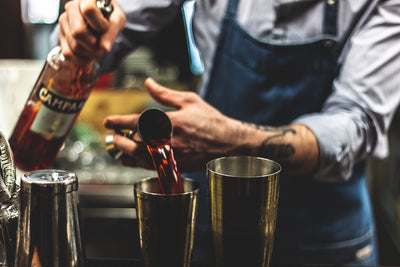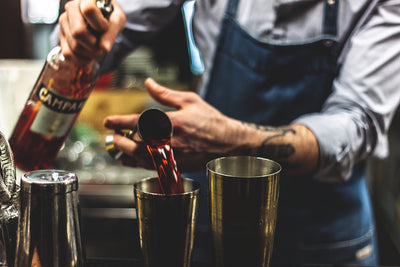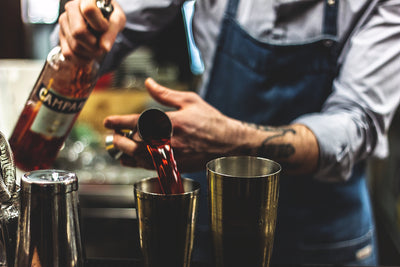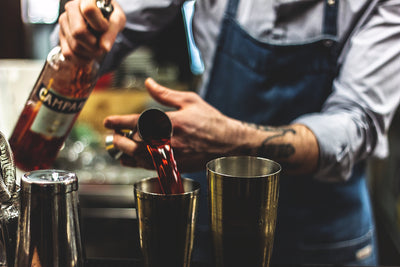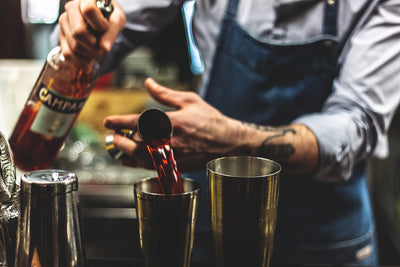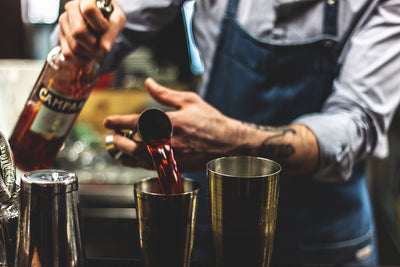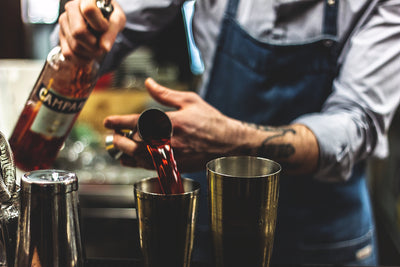What Cocktails Use Triple Sec?

Discovering the Citrus Charm: What Cocktails Use Triple Sec
Triple sec, a fragrant, sweet, and colorless orange-flavored liqueur, plays an indispensable role in the cocktail world. Its name, meaning "triple distilled," speaks to the purity and intensity of its citrus flavor, making it a key ingredient in a myriad of classic and contemporary cocktails. So, what cocktails use triple sec? This versatile liqueur enhances drinks with its bright, orange essence, contributing both sweetness and depth. Let's explore some of the most beloved cocktails that feature triple sec, showcasing its ability to elevate a simple mixture into a memorable concoction.
The Margarita
Perhaps the most famous cocktail to use triple sec is the Margarita. This iconic drink combines tequila, triple sec, and fresh lime juice, served in a salt-rimmed glass. The triple sec in a Margarita balances the acidity of the lime and the robustness of the tequila, creating a harmonious and refreshing cocktail beloved around the world.
The Cosmopolitan
The Cosmopolitan, or "Cosmo," gained fame in the 1990s and remains a popular choice for its vibrant color and sophisticated flavor profile. A blend of vodka, cranberry juice, lime juice, and triple sec, the Cosmopolitan is served in a chilled martini glass and often garnished with a lime wheel or orange zest. Triple sec adds a necessary citrusy sweetness that complements the tartness of the cranberry and lime.
The Long Island Iced Tea
Known for its potent mix of spirits, the Long Island Iced Tea is a concoction of vodka, tequila, light rum, gin, and triple sec, topped with cola and lemon juice. Triple sec is crucial in this cocktail, providing a sweet and citrusy counterbalance to the medley of spirits and the tanginess of the lemon, resulting in a surprisingly smooth and palatable beverage.
The Sidecar
A classic cocktail dating back to the end of World War I, the Sidecar is a sophisticated blend of cognac, lemon juice, and triple sec. The drink is known for its perfect balance of sweet and sour, with triple sec rounding out the flavors and adding a bright citrus note that elevates the cognac's complexity.
The White Lady
Elegant and refreshing, the White Lady is a gin-based cocktail that includes triple sec and lemon juice. The silky texture often comes from the addition of egg white, which, when shaken with the other ingredients, creates a frothy top layer. Triple sec brings a sweet citrus balance to the gin's botanicals and the lemon's acidity, resulting in a smooth and invigorating drink.
The Mai Tai
A quintessential Tiki cocktail, the Mai Tai combines rum, lime juice, orgeat syrup (almond syrup), and triple sec. This tropical drink is celebrated for its depth of flavor, where triple sec plays a vital role in adding a layer of citrus sweetness that complements the rum's richness and the orgeat's nuttiness.
Conclusion
Triple sec is more than just an orange liqueur; it's a key ingredient that brings brightness, sweetness, and depth to a wide array of cocktails. From the tangy Margarita to the potent Long Island Iced Tea, triple sec's versatility allows it to shine in diverse drink recipes, enhancing each with its distinctive citrus flavor. Understanding what cocktails use triple sec is essential for any mixologist or cocktail enthusiast looking to explore the full spectrum of flavors available in the art of drink making. As you experiment with triple sec in your cocktail creations, you'll discover just how much this delightful liqueur can transform your beverages from good to unforgettable.
DECANTER: WHAT IS A DECANTER AND HOW IS IT USED?
BOSTON SHAKER: WHAT IS A BOSTON SHAKER AND HOW TO USE IT?
MUDDLER: WHAT IS A MUDDLER AND HOW IS IT USED?
HAWTHORNE STRAINER: WHAT IS A HAWTHORNE STRAINER AND HOW IS IT USED?
Frequently asked questions about triple sec
Etymology of Triple Sec
The origins of the name "triple sec" are often debated. This French term combines "triple," meaning the same in both English and French, and "sec," which translates to "dry" in English. The true source of the term is a point of contention; some suggest that it refers to a triple distillation process that the liqueur undergoes, though this method is not universally acknowledged. Alternatively, the well-known brand Cointreau, a type of triple sec, is said to have coined the term based on the three varieties of orange peels used in their recipe. However, other sources claim that Cointreau defines "triple" as indicating a triple intensity of flavor compared to traditional Curaçaos. The precise etymology of "what is triple sec" remains a fascinating aspect of its history, reflecting both the complexity and the allure of this celebrated liqueur.
What Is The History of Triple Sec?
Triple sec has enjoyed popularity for over a century and a half, tracing back to the Dutch East India Company's introduction of orange liqueurs. These early versions, crafted by steeping dried orange peels imported from regions like the island of Curaçao, differed from the contemporary triple sec, known for its singular orange peel flavor, devoid of additional herbs and spices, and available in clear, orange, or blue variations. The Combier distillery claims the invention of triple sec in 1834 by Jean-Baptiste Combier and his wife Josephine in Saumur, France. Inspired by the rising popularity of orange liqueur post-Curaçao introduction, the Combiers aimed to produce a liqueur that highlighted the essence of the orange, using a blend of bitter and sweet oranges for a balanced flavor. This desire led to the development of a distillation process that emphasized the purity of orange essential oils. By 1875, Cointreau emerged with its version of triple sec, quickly becoming one of the most recognizable brands in the market. The global recognition of triple sec was evident by 1878, as it was prominently featured at the Exposition Universelle in Paris.
How Is Triple Sec Made?
Understanding "what is triple sec" extends to its unique production process. Typically, triple sec is crafted from a base spirit derived from sugar beet, chosen for its neutral flavor profile. This base is infused with orange peels, collected when the fruit is unripe to ensure that the essential oils are concentrated in the peel rather than the flesh. Following the initial infusion, the spirit undergoes redistillation and is then mixed with additional neutral spirit, water, and powdered beet sugar to create the final liqueur. This meticulous process yields a spirit celebrated for its robust and unmistakable orange flavor, encapsulating the essence of "what is triple sec" in every bottle.
